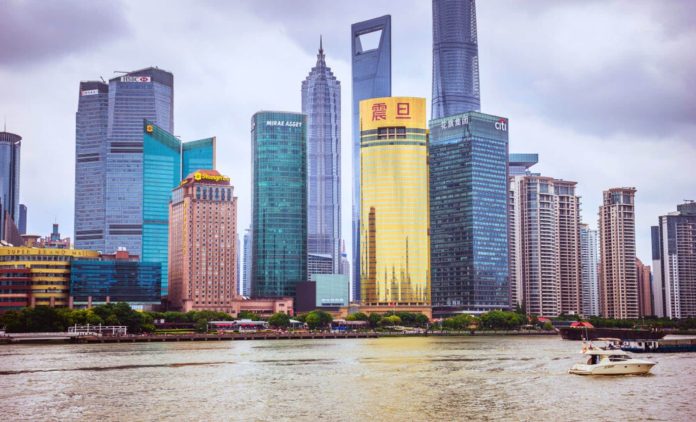In the dizzying skylines of China’s megacities, a quiet labor crisis is unfolding—one that exists not on the streets, but hundreds of feet above them. Across cities like Shenzhen, where towers regularly stretch 60, 70, even 100 floors into the air, delivery drivers are facing a challenge their platforms never planned for: skyscrapers so massive and complex that the final phase of delivery—navigating inside the building—takes longer than the trip across town.
A growing number of couriers now offload deliveries to unofficial middlemen who specialize in the final vertical stretch. These workers, known locally as “last-mile climbers,” take the elevator—or the stairs—so the original driver can move on and keep pace with demanding quotas. But this workaround, born out of desperation, signals a deeper systemic flaw.
Inside China’s Skyscraper Squeeze
China now boasts nearly half of the world’s tallest skyscrapers—those exceeding 150 meters. Shenzhen alone has more than 200 of them, and many serve as residential high-rises with thousands of occupants who depend on fast delivery for everything from meals to groceries.


Yet these buildings—designed for prestige, not practicality—pose formidable logistical barriers. Elevator banks are often segmented to serve specific zones, access systems vary widely, and service corridors are confusing even for tenants. For delivery workers on tight deadlines, these variables are devastating.
As reported by The New York Times, couriers in Shenzhen routinely spend 30 to 40 minutes navigating inside a single high-rise. Many now subcontract to younger runners familiar with each building’s quirks, often for just a few yuan per package.


While this shadow labor force helps the system function, it is informal, unregulated, and invisible in official statistics. These couriers work without contracts or protection—an unsanctioned patch for a systemic failure in modern logistics.
The Architecture of Dysfunction
The root of the crisis lies not in technology, but in the disconnect between building design and human systems. Skyscrapers have become architectural trophies in cities competing for global status. But their internal design rarely considers the daily flow of workers, services, and deliveries.
A study by the University of Oxford’s Sustainable Urban Development Unit found that inefficient access routes in supertalls can triple last-mile delivery time compared to mid-rise structures.


As Professor Liang Wei, an urban design expert at Tsinghua University, explains:
“Developers build for height, brand, and density. But inside, the systems aren’t designed for service access. That’s where it breaks down.”
The result is a dangerous precedent: cities optimized for vertical density but deeply hostile to the people who keep them running—from cleaners and maintenance workers to food couriers.
Platform Algorithms, Human Fallout
The pressures of this system are compounded by the platform algorithms that govern China’s $167 billion food delivery market.
According to Xinhua, over 10 million people worked as instant delivery riders in China by 2023, with more than 545 million consumers using food delivery apps. The pace is relentless: 56,000 online orders are placed every minute.


But time is the one commodity these platforms won’t bend on. If a delivery arrives late—even by seconds—riders risk lost income, fewer future orders, or even suspension. The internal climb through a building isn’t accounted for by the algorithms; once the courier reaches the lobby, the system assumes the job is done.
“There is no line item in the algorithm for floor access,” notes Sun Ping, a labor researcher at the Chinese Academy of Social Sciences. “The software doesn’t care if the customer lives on the 3rd or 83rd floor.”
Following public scrutiny and policy intervention, companies like Meituan pledged to adjust algorithms and reduce penalties. But experts say the core logic—speed above all—hasn’t changed. Government data shows that nearly 20% of riders work more than 12 hours a day, and 88% admit to breaking traffic laws to meet deadlines.
The Invisible Labor Keeping Skyscrapers Running
What makes the “vertical courier” phenomenon so revealing is that it’s not just about food delivery. It’s a blueprint for what happens when gig economies interface with unsustainable urban design.
These subcontracted runners—teenagers, students, or underemployed locals—aren’t hired by platforms. They’re hired by riders, informally, and often work in silence. Their pay is small, their work is untracked, and their contributions are unrecognized. Yet they’re essential to making vertical life possible.


They represent a broader shift toward decentralized, workaround-based infrastructure in cities where digital systems lag behind physical realities. As buildings rise higher, human endurance—not innovation—is keeping services moving.
Autonomous delivery robots can’t pass facial-recognition gates. Drones can’t land in elevator lobbies. For now, only human labor can scale these towers.







